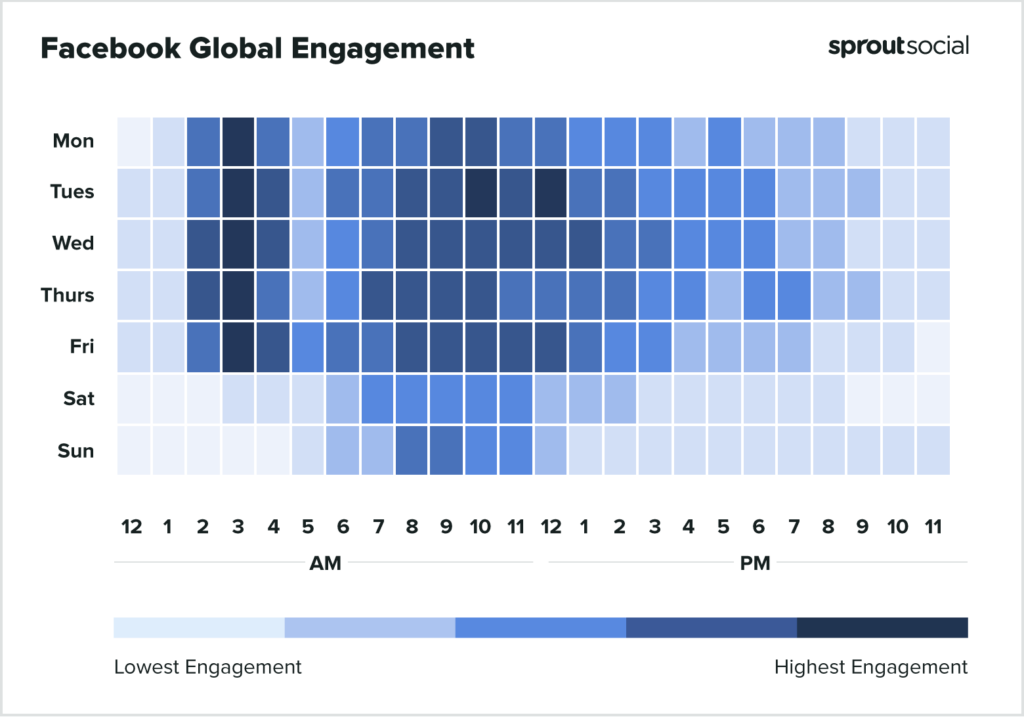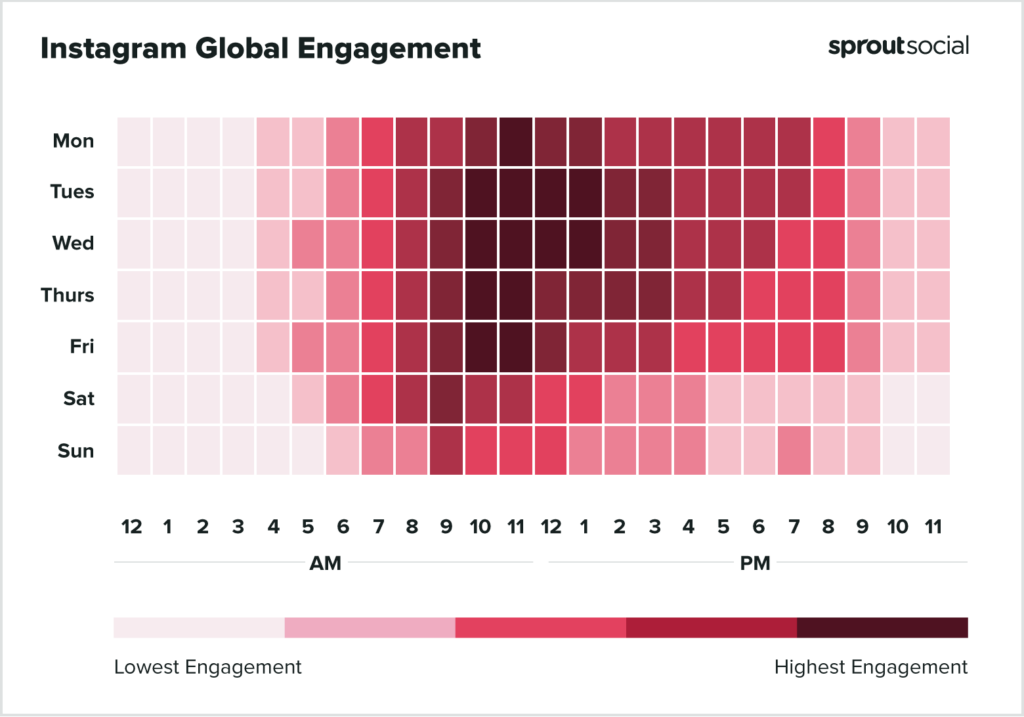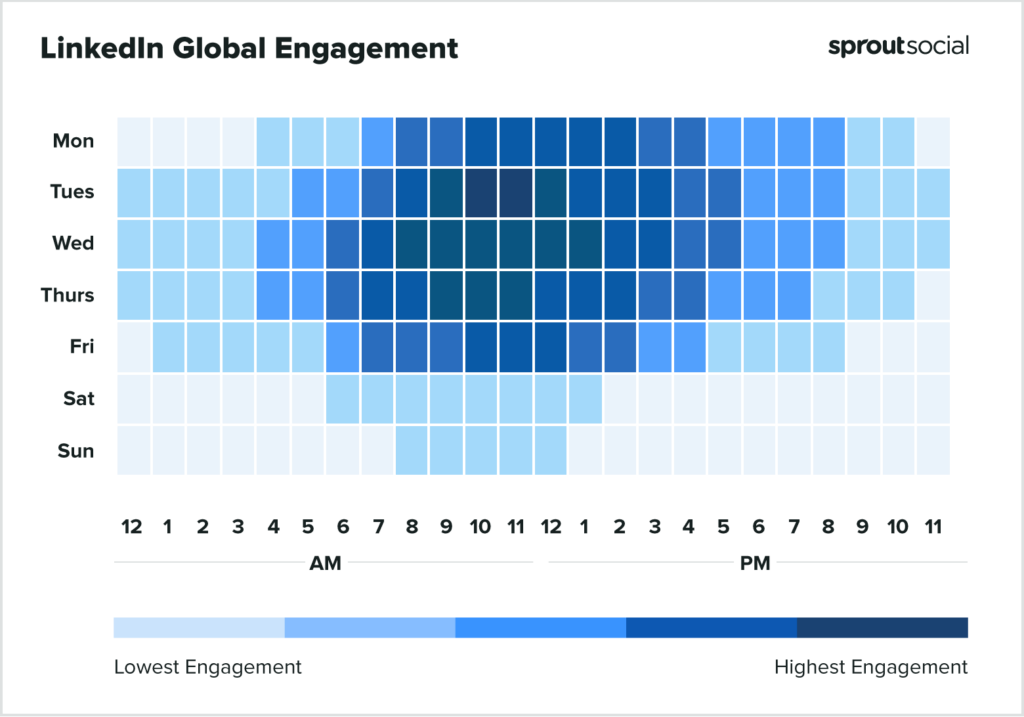Around 90% of marketers say that social media marketing helps boost the business’ exposure. But, not everyone can leverage its true power.
To get the desired traction from social media, you should ensure that your posts are engaging. Your content plays a key role here. But, you should also know the best time to publish your posts.
This is easier said than done, especially if you’re just getting started. Determining the right time for your social media posts can be tricky and require multiple attempts to come up with a perfect schedule.
Here are the 7 easy steps to find the right time to schedule your social media posts.
1. Know your audience
To determine the right time to schedule your social media posts, you have to be familiar with your audience.
Over 4.62 billion people worldwide use social media but not all of them are active at the same time. So, it’s important to know the time during which your audience is most active on the respective social media channels.
User demographics, interests, and preferences have a major impact on how and when they consume the content shared on your social media page. And these characteristics may vary as per the niche you’re targeting.
Therefore, it’s important to know about your audience when scheduling social media posts. This helps you acknowledge high user engagement.
2. Explore platform dynamics
To come up with the right time to schedule your social media posts, it’s essential that you explore the dynamics of the respective social media platforms.
Each platform caters to different user demographics. So, the best time to share content on all platforms may differ.
You can come up with a generic content posting schedule for all of your social media pages but it may lead to subpar engagement. So, it’s important that you carefully choose the best-suited time as per the respective social media platforms.
According to SproutSocial, the best days to schedule content on Facebook are the weekdays. The worst days to post are Saturdays. The best time to post is around 3 a.m. (US Central Time). This may seem odd but around 27% of people access social media as soon as they wake up.

The best days to post content on Instagram are the weekdays. The best time to post is around 11 a.m. And, the worst days to post are Sundays.

Monday to Saturday are the best days to schedule your posts on Twitter. The best time to share content is around 9 a.m. And, the worst days to post are Sundays.

The best days to post on LinkedIn are the weekdays. The best time to post is from 10 a.m. to 12 p.m. Publishing content on weekends is not recommended.

You can take inspiration from these insights when scheduling your posts on different social media platforms. However, these are just general guidelines.
Every niche has different dynamics concerning the social media activity of its respective audience. So, you have to take that into consideration as well.
3. Do competitive research
Observing your competitors’ social media posts for different channels can help you identify the best time to schedule your content.
This is a bit time-consuming process. You will have to go through the posts manually and explore the engagement on different threads. But, the insights you will get from this are priceless.
Your competitors have an audience that’s similar if not completely identical to yours. So, why reinvent the wheel? Take inspiration from what’s working and replicate the process.
If your competitor posts scheduled on Tuesday at around 10 a.m. in the morning get the most traction throughout the week, maybe you should do the same.
Exploring your competitors help you find the best time to schedule your posts on social media and elevate engagement. All you have to do is analyze the patterns and come up with a fitting strategy based on competitor research.
4. Start With an Educated Guess
Now that you’ve gathered enough information, it’s time to get started. Remember, it’s less likely for you to come up with a perfect schedule on the first try. So, consider trial and error.
If this is not the first time you’re scheduling social media posts, look at the performance of previous posts. If you’re just getting started, make do with whatever information you have.
Based on the insights you have gathered, make an educated guess and create a posting schedule. But, there are a few logical checks that you should consider:
- Avoid posting during rush hours.
- Scheduling posts on weekdays is better than on weekends.
- Publishing content early morning is better than posting it late at night.
5. Consider the time zone difference
There are around 4.3 billion internet users around the globe and 80% of them have more than 5 social media accounts. So, it’s important that you consider time zone differences while scheduling your social media posts on the respective platforms.
Without factoring in the time zone difference, all your research and hard work would be for nothing. Your time zone can be different than your audience, so, make adjustments accordingly.
However, it can be hectic to make amends if you’re catering to a worldwide audience. In that case, the best strategy would be to target regions where your audience is in abundance.
This will affect engagement on your posts in some regions. But, the overall process would be a little less tedious and time-consuming.
6. Test different variations
Test different variations before finalizing your posting schedule. This will increase the chances for you to get the desired results and traction on your posts.
Create different schedules and share similar content at different times. You should test multiple variations for at least a week. Once you’ve gathered enough data, see which posts got you the best results and decide accordingly.
This may sound like overkill but testing different schedules increases your chances of acknowledging better engagement on your social media posts.
What if you came up with a well-thought-out schedule but it just doesn’t work? It’s better to have different options than to have just one.
7. Explore analytics
Explore your social media analytics and keep refining your strategy. Things change. What was working yesterday may not work tomorrow due to unforeseen reasons. So, you have to be a bit proactive. And you can do that by analyzing the data to seek improvements.
Explore the top-performing posts with respect to reach. Most social media platforms restrict the reach of your posts by default. Only 2% of your followers on Facebook actually see your updates. Other platforms are no exception. So, if a post has amazing reach, it means you did something right there.
Continuous improvement is the key. Look for the day and time the respective post was published. And keep optimizing your schedule as per the insights to get desired results.
Wrapping up!
There you have it. The 7 easy steps to determine the right time to schedule your social media posts. Coming up with the best-suited schedule is an intricate process. There is a lot of trial and error involved and doing it manually can be exhausting for many.
You can use different apps to automate this process. For example, Crowdfire automatically suggests the best time for you to post on your different social media accounts. The app also allows you to customize your schedule on a daily basis and keep optimizing the process.
So, choose the way that’s more fitting for you.

